
Turning complexity into clarity
Roadmaps is rooted in a strong pedagogical conviction: each student follows a unique path. The platform evaluates their real starting point, identifies gaps, and builds skills from there, without forcing everyone to begin at the same place. This approach translates into a powerful recommendation system for both students and teachers.
However, that philosophy was not always reflected in the user experience: navigation was not intuitive, too many options created cognitive overload, and recommendations often got lost, leaving students and teachers unsure of “what to do next.” This affected confidence, sustained use, and overall motivation.
We identified an opportunity from a design perspective: to make this vision visible at every step of the journey, simplifying, guiding, and adapting the experience so that recommendations felt clear and actionable, and each step forward was intentionally designed to be motivating, through micro-achievements, positive feedback, and attainable goals integrated into the interface.
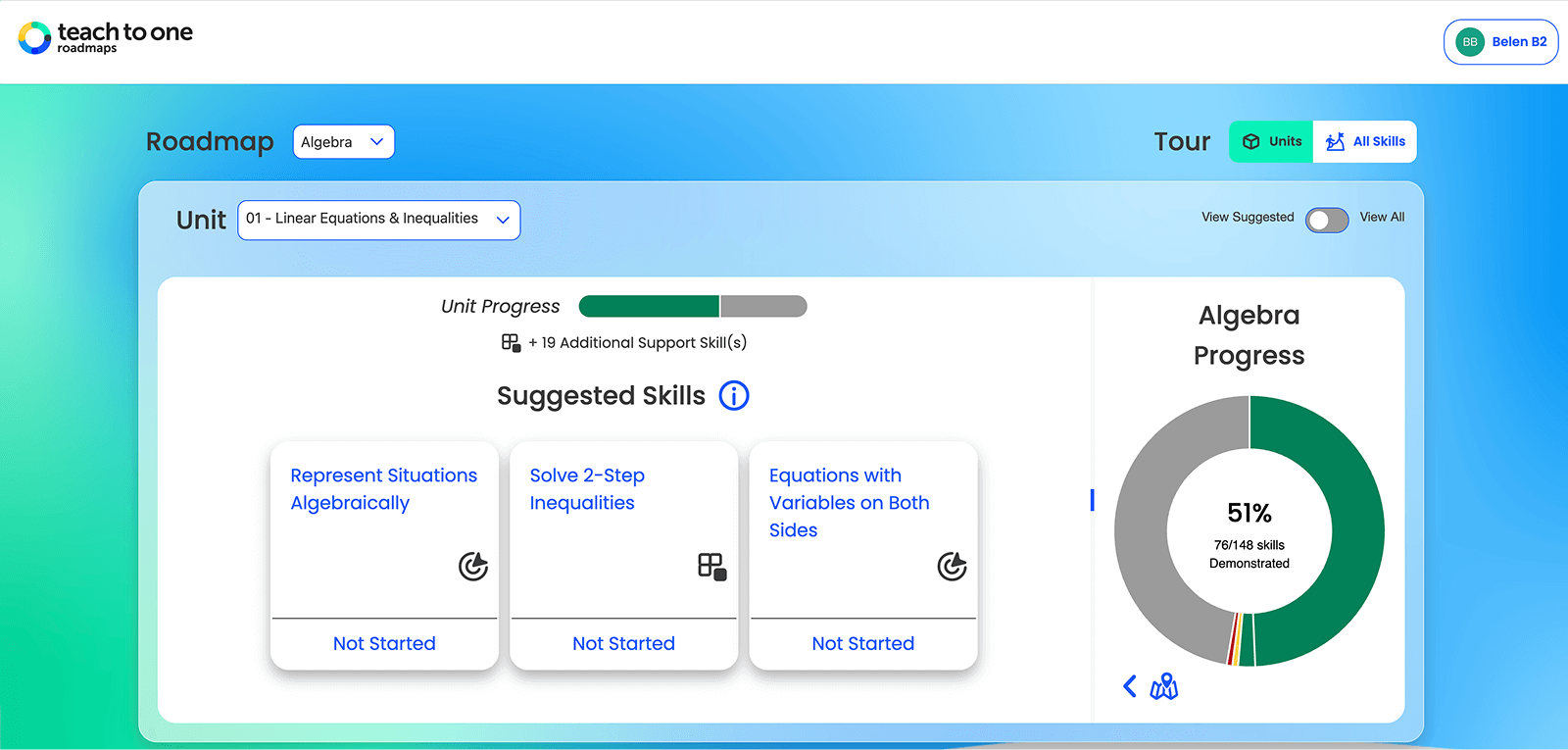

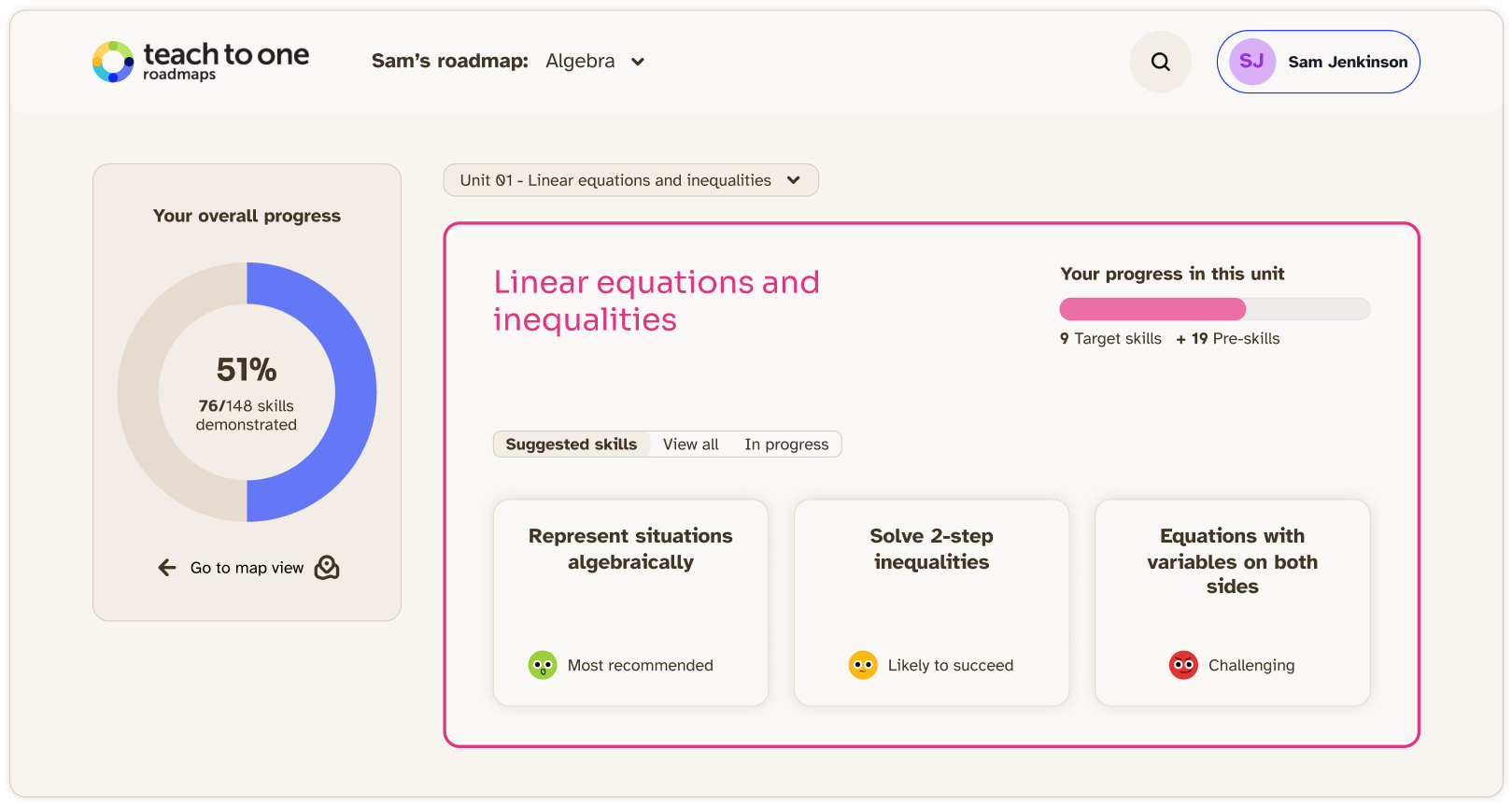

.png)
Designing a motivating journey
In collaboration with New Classrooms, we developed a strategic exploration that combined user experience design, visual identity, and pedagogical motivation:
- A new layered navigation architecture (Roadmap → Unit → Skill) that simplified the experience and reinforced key milestones.
- A renewed visual identity, with a vibrant and accessible color palette, inclusive typography, and a system of illustrations and characters tailored to different ages and learning styles.
- An experience framework built on clear rules: visible goals, meaningful gamification, and a sustained motivation system through badges, side quests, positive feedback, and empathetic messages.
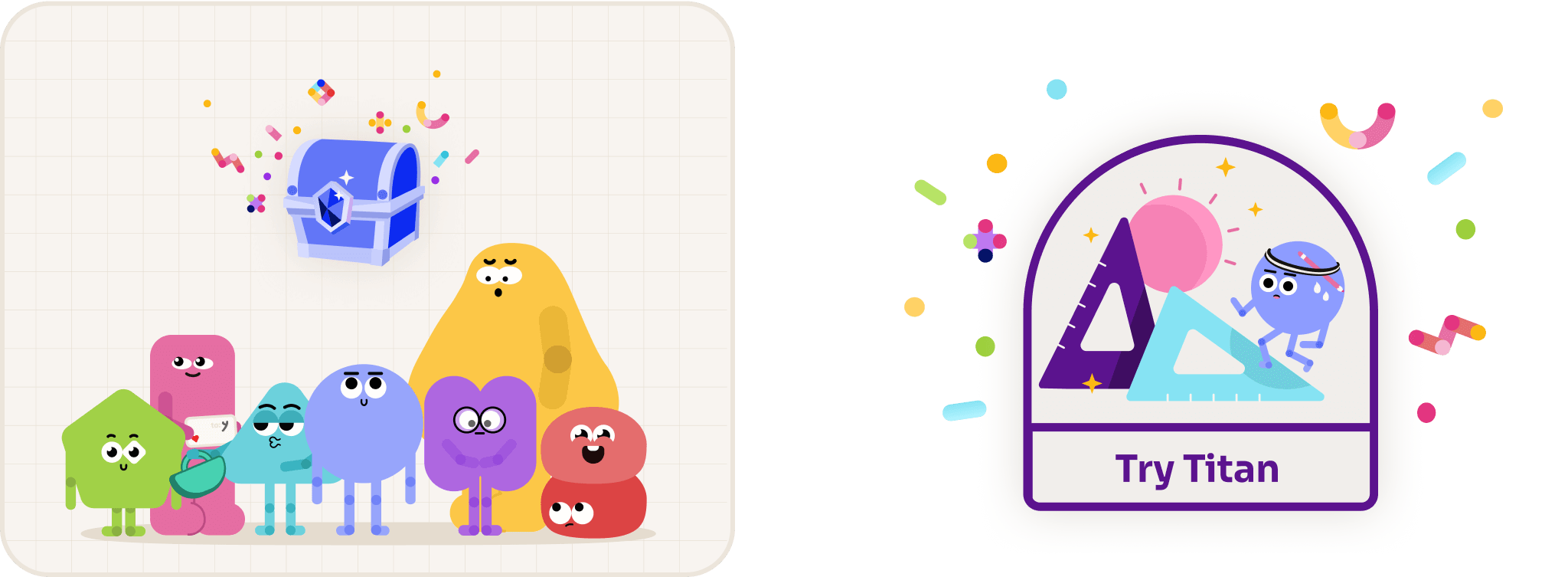
Building the foundations for lasting impact
The project consolidated a renewed and practical vision, with an MVP focused on the Unit View.
The goal: to make the choice of what to work on both clear and motivating, especially
in contexts with diverse cognitive maturity and math levels, where deciding the next step is
not always obvious. We redesigned how skills are presented within a unit so that every student quickly understands their options, why they matter, and how to move forward with confidence. At the same time, we enhanced the in-skill experience to celebrate small victories and sustain motivation even when performance is not ideal.
We also prioritized efficient use of time: if a student demonstrates mastery, they can go straight to verification; if they struggle, the interface redirects them to targeted support for prerequisites before trying again.
The result is a solid foundation for future iterations: Roadmaps evolves into a scalable and coherent ecosystem that strengthens the confidence of students and teachers, transforming learning into a motivating and meaningful journey.
This renewed foundation also ensures a seamless connection with Learnosity’s assessment platform, aligning learning progress and evaluation into a coherent, motivating experience designed to scale over time.
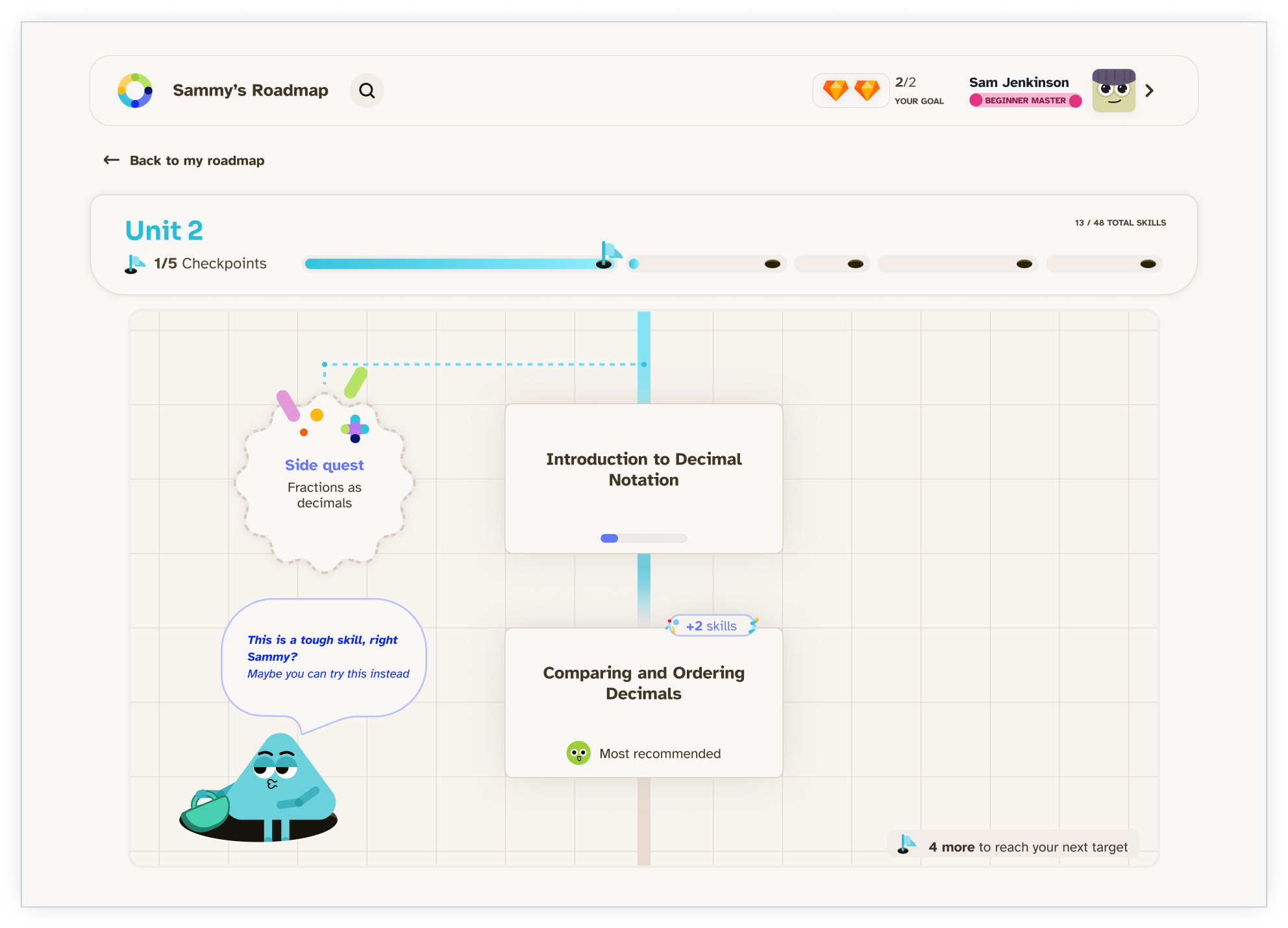







.svg)






%202.png)

%202.png)



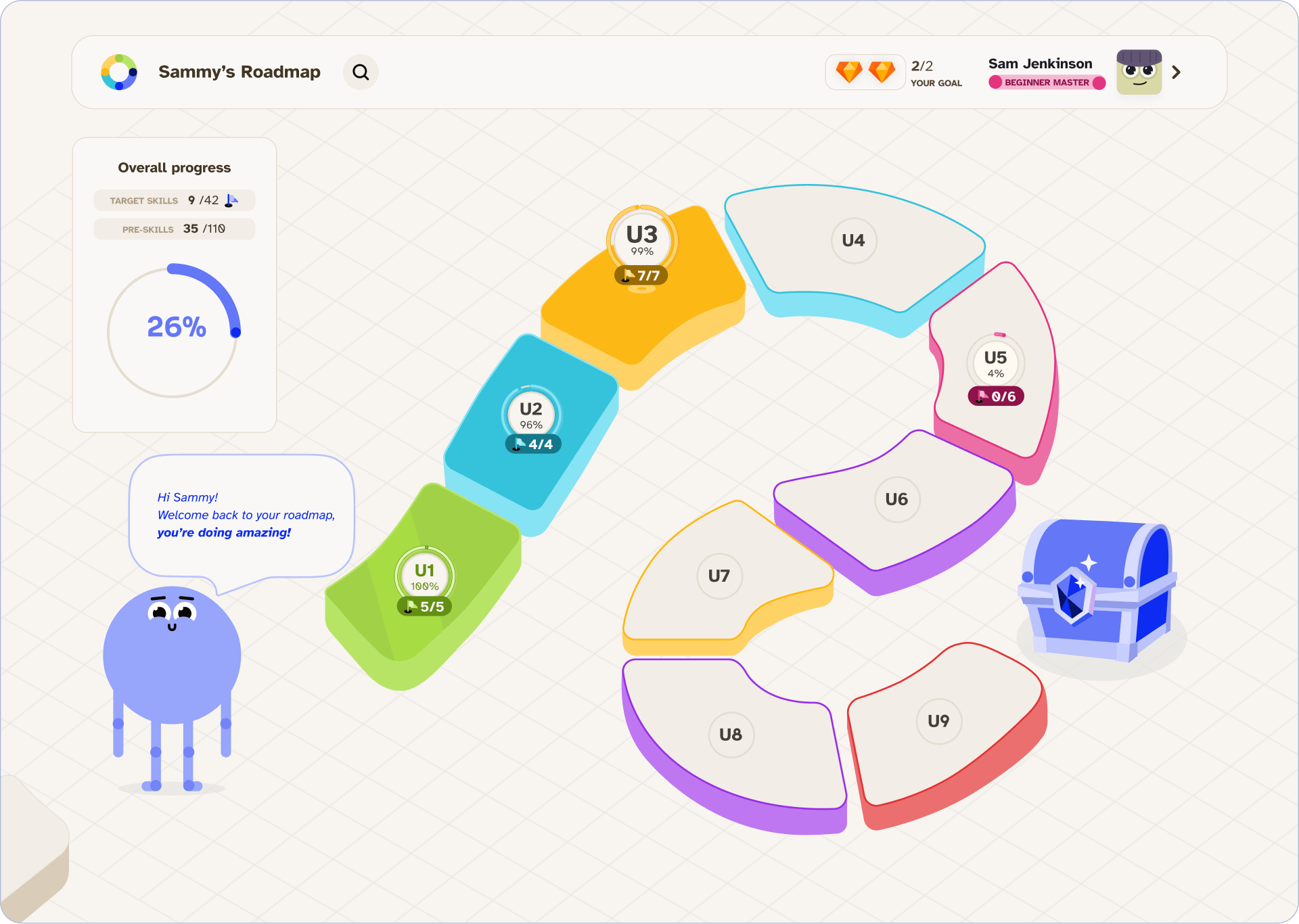
%202.png)
%202.png)


